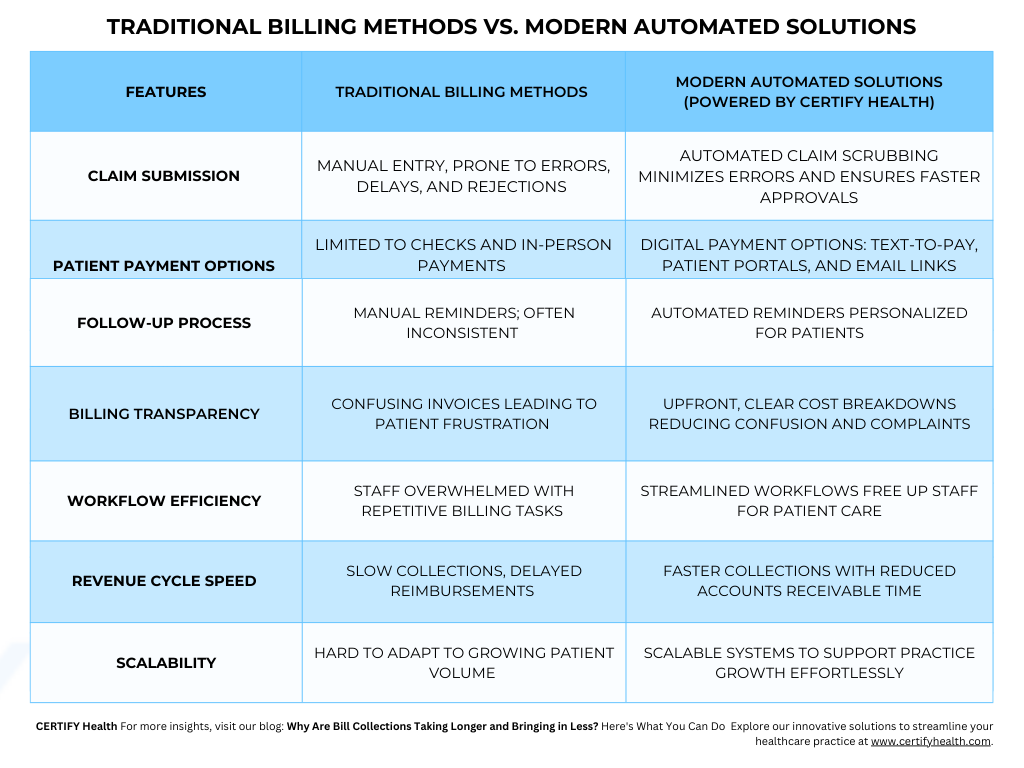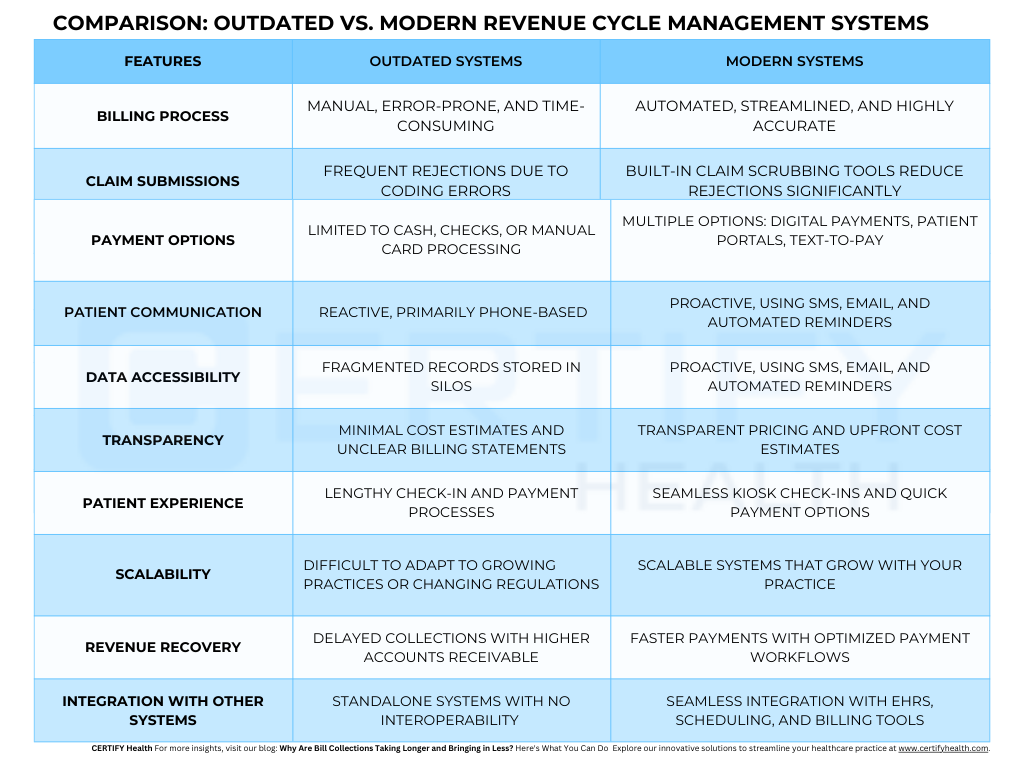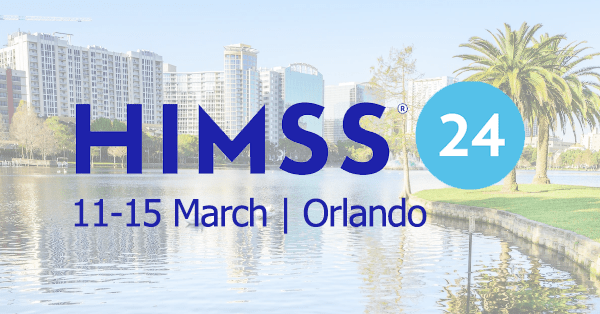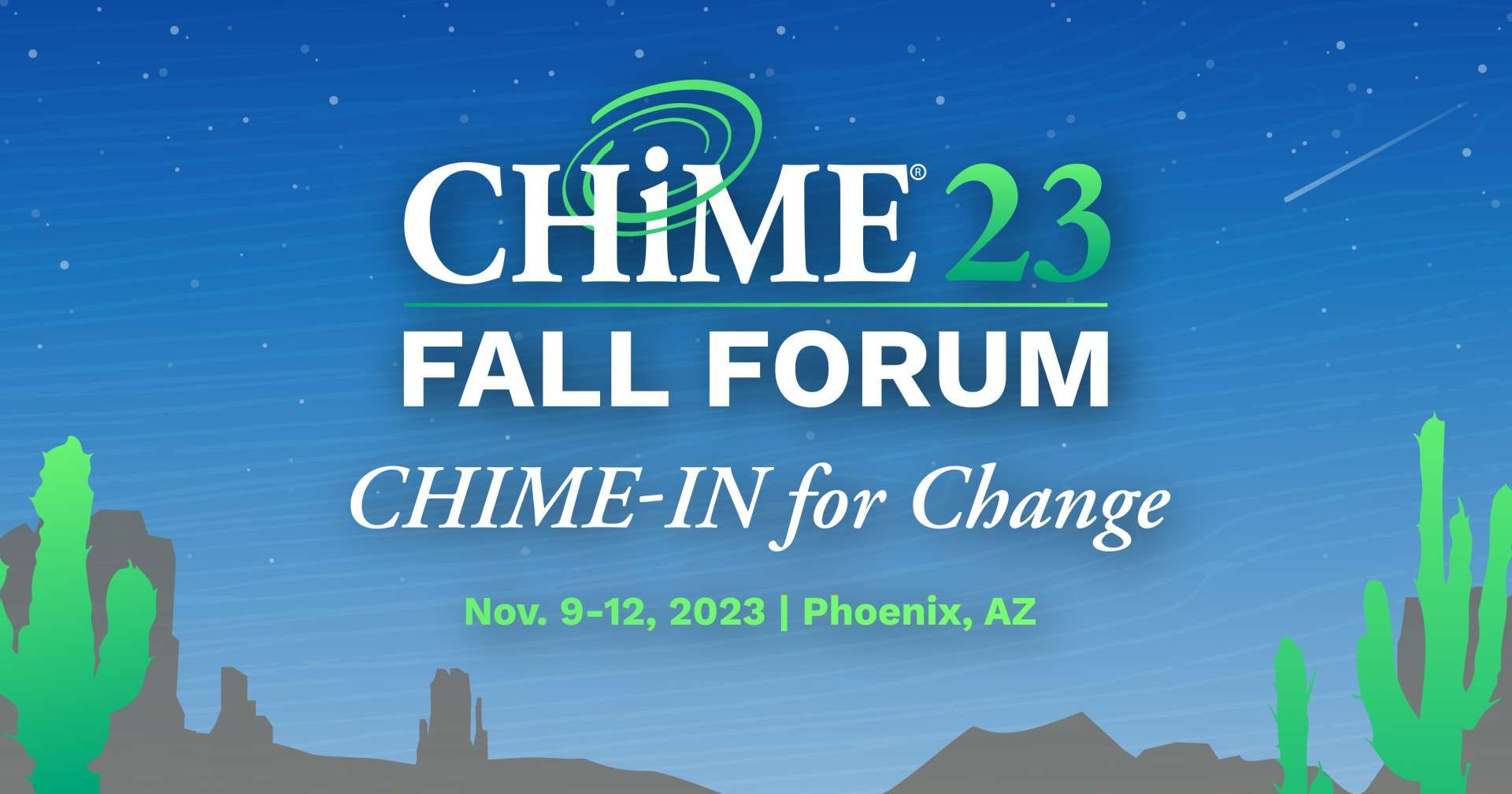Picture this: your practice is thriving with patients coming through the door, appointments are packed, and everyone is working at full tilt. Yet, the cash flow tells a different story—it’s sluggish.
Bills are piling up, and payment collections are dragging their feet. The amounts you manage to collect are shrinking, and delayed payments are putting growth plans on ice.
Sounds familiar?
The road to faster payment collections and improving cash flows is streamlining revenue cycle management in healthcare. But what’s slowing down your revenue cycle? Let’s find out!
The Diagnosis: What’s Slowing Things Down?
The medical billing world has always been a bit of a minefield, but lately, the terrain feels more treacherous. Here’s what might be tripping you up:
- Insurance Hassles: Payers are rejecting or delaying claims over the tiniest errors. Even a missing middle initial can mean weeks of waiting.
- Patient Confusion: Patients face a jungle of deductibles, co-pays, and EOBs (Explanation of Benefits)—and often don’t know what they owe until it’s too late.
Tip: A patient check-in kiosk simplifies this process by displaying clear, real-time billing updates, helping patients understand their financial responsibilities upfront and improving payment collections..
- Economic Pressures: Rising costs mean patients delay or skip payments entirely. They’re balancing healthcare bills against groceries, rent, and other necessities.
You’re not alone in this struggle. Practices nationwide are seeing accounts receivable balloon while reimbursement rates creep downward.
The Ripple Effect: How Delayed Cash Flow Chokes Growth
Here’s the brutal truth: slow payment collections don’t just hurt your revenue—they stifle everything else.
When your cash flow takes a hit, you’re left scrambling. Payroll gets tight, new hires are postponed, and you’re forced to shelve plans for that upgraded imaging system or extended clinic hours.
And the stress? It trickles down. Front desk staff end up fielding awkward conversations with patients about payments, providers feel the pinch of tighter budgets, and the whole team feels the tension.
The good news is that there are strategies to end this cycle.
Prescription for Change: Small Tweaks, Big Payoffs
Let’s get practical. These steps can help you turn things around:
1. Tighten Your Billing Game
Accuracy is everything. Clean claims get paid faster, so take a hard look at your billing process.
Optimizing your payment collection process with tools like automated reminders and error-checking software can significantly reduce delays in reimbursements.
Leverage patient payment solutions that enables seamless follow-up and provides patients with clear instructions to settle their dues quickly.
Platforms like CERTIFY Health integrate with payer systems to streamline pre-authorization, reducing bottlenecks.
- Pre-authorization checks: Double-check coverage before appointments.
- Scrub those claims: Use software that flags potential errors before submission.
- Train your team: Regular refreshers on coding changes can save time and headaches later.
Let’s take a closer look at how modern revenue cycle management healthcare stacks up against outdated methods—and why it’s time to rethink your approach.

2. Make It Easy for Patients to Pay

If patients are your primary payers, offering them multiple payment methods can make all the difference in payment collection.
- Flexible payment plans: A smaller monthly payment is better than no payment at all.
- Digital payment options: Think text-to-pay, email links, or patient portals. Expanding your payment methods to include credit cards, online wallets, and ACH payments ensures flexibility and convenience for all patient demographics. We can all agree to this—Nobody wants to mail a check in 2025.
- Transparent billing: Clear, upfront estimates reduce confusion and frustration later.
Tip: Adding a kiosk check-in feature can streamline patient intake while providing a seamless experience for both the front desk and patients. These patient check-in kiosks can also update patient balances and enable on-the-spot payments.
3. Invest in Tech That Works

Let’s face it: Outdated systems aren’t cutting it anymore.
Modern Patient payment solutions can automate billing, streamline patient communications, and even send polite (but firm) reminders.
In addition, these solutions can streamline revenue cycle management healthcare, addressing operational inefficiencies and ensuring timely payment collections across the board.
Implementing revenue cycle management healthcare solutions can address operational inefficiencies and ensure timely payment collections across the board.
Leverage digital solutions like CERTIFY Health’s patient payment management software, it comes with the capability to ensure accurate insurance eligibility verification, transparent billing, and payment collection through various payment methods like ACH, Credit Card, Credit Cards, Google Pay, Flexible Payment Plans, etc., streamlining your revenue cycle.
4. Don’t Ignore Follow-Ups
This is where many practices drop the ball.A gentle reminder can make all the difference in payment collection.
- Automate reminders for overdue balances.
- Personalize follow-ups—patients respond better to a “Hi, John” than a generic “Dear Patient.”
ShapeCERTIFY Health integrates automation to schedule reminders, ensuring no overdue balance slips through the cracks.
The Bigger Picture: A Mindset Shift
Here’s something you might not have considered: collections aren’t just about money—they’re about relationships. When patients trust you, they’re more likely to prioritize your bills. So, think about ways to foster that trust:
- Listen when they call with questions.
- Offer flexible options during tough times.
- Show empathy—it costs nothing but earns loyalty.
Pro Tip: To measure your RCM success, you should track metrics like Net Collection Rate (NCR) and Account Receivable (AR) Turnover Rate. NCR measures how effectively a practice collects payments after insurance, whereas AR measures the outstanding amount that patients or insurers owe to a practice. These metrics can help you identify inefficiency in your process and ensure data-driven decision-making for improvements
Wrapping It Up
Sure, the healthcare landscape is challenging, and delayed payment collections feel like just another headache in an already busy day. But you’ve got tools, strategies, and—most importantly—the ability to adapt.
Remember, cash flow isn’t just a number on a spreadsheet. It’s the fuel that keeps your practice running and growing. So, whether it’s tightening up processes, embracing better tech, or simply offering patients a little more clarity, every small change adds up.
Let’s get that cash flowing again—and maybe, just maybe, take a little stress off your plate too. Explore CERTIFY Health’s Patient Payment Management Software – Book a Demo











